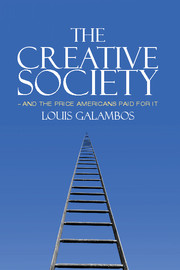Book contents
- Frontmatter
- Contents
- Preface
- 1 1931
- 2 Life, Death, and Learning in the Cities
- 3 Toward a New Economy, 1890 to 1930
- 4 State Crafting – American Style
- 5 Confronting the World
- 6 Winners and Losers, 1890 to 1930
- 7 New Deal Experiments
- 8 Fighting On God’s Side
- 9 The New Aristocracy, 1946 to 1969
- 10 The Suburban Conquest of the 1960s
- 11 Empire in the American Century
- 12 The Tattered Empire of the 1970s
- 13 The Cracked Core
- 14 The American Solution, 1981 to 2001
- 15 Conservatism: Rhetoric and Realities, 1981 to 2001
- 16 The Hegemony Trap
- 17 The American Dream, 1981 to 2001
- 18 The Creative Society in Danger
- Acknowledgments
- Index
- References
11 - Empire in the American Century
Published online by Cambridge University Press: 05 June 2012
- Frontmatter
- Contents
- Preface
- 1 1931
- 2 Life, Death, and Learning in the Cities
- 3 Toward a New Economy, 1890 to 1930
- 4 State Crafting – American Style
- 5 Confronting the World
- 6 Winners and Losers, 1890 to 1930
- 7 New Deal Experiments
- 8 Fighting On God’s Side
- 9 The New Aristocracy, 1946 to 1969
- 10 The Suburban Conquest of the 1960s
- 11 Empire in the American Century
- 12 The Tattered Empire of the 1970s
- 13 The Cracked Core
- 14 The American Solution, 1981 to 2001
- 15 Conservatism: Rhetoric and Realities, 1981 to 2001
- 16 The Hegemony Trap
- 17 The American Dream, 1981 to 2001
- 18 The Creative Society in Danger
- Acknowledgments
- Index
- References
Summary
If we’re going to understand America's post–World War II empire, we need to jump back in time, back to 1945. For most Americans, the war erased the boundary between realism and idealism in foreign policy, easing the nation toward a new style of vastly extended empire. Having just won a great victory over immoral fascism, this generation of Americans had reason to believe their exercise of global power would always serve moral as well as military, economic, and political ends. There were doubters. The brilliant scientist Robert Oppenheimer publicly confessed that he and the others who had developed atomic weapons had “known sin.” But his colleague, Earnest O. Lawrence, denied that his experiences in science and war had ever brought him into a new relationship with sin. Most of his fellow scientists and citizens seem to have agreed.
With concerns about idealism tabled or left to the friends of the UN, the realists plowed ahead with their plans for the postwar world. Shortly after Japan surrendered, military planners in the Air Force already had in hand a strategic plan that included fifteen cities in the Soviet Union, cities that could be the targets for atomic weapons like the ones used against Hiroshima and Nagasaki. No moral quivers there! No doubts either about the next enemy. Other professional strategists had more specific plans for the empire and its nemesis, the Soviet Union.
- Type
- Chapter
- Information
- The Creative Society – and the Price Americans Paid for It , pp. 166 - 182Publisher: Cambridge University PressPrint publication year: 2011



